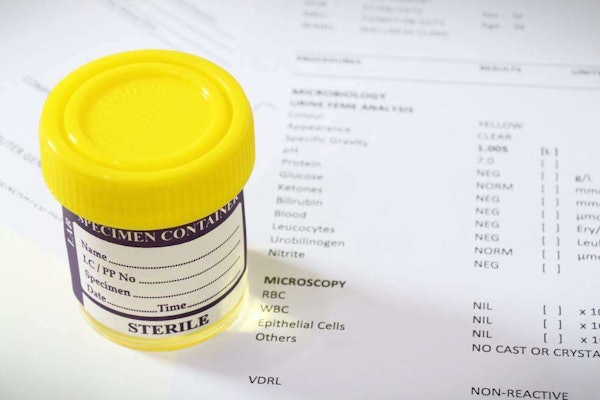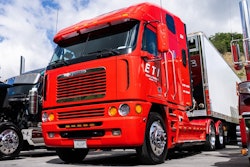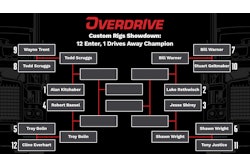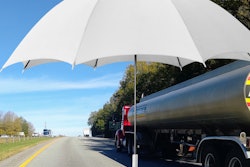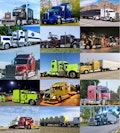A
ACCOUNTS PAYABLE. Amounts owed by a business to its creditors.
ACCOUNTS RECEIVABLE. Amounts owed to a business by customers.
ADDITIVE. Solutions added to diesel fuel during cold weather to reduce waxing and gelling or in all weathers to enhance lubricity. Also solutions intended to improve engine oil.
ADJUSTED GROSS INCOME (AGI). The income on which an individual calculates income tax. For a sole proprietorship, AGI minus deductible business expenses equals amount taxed.
ADVANCE. Money paid to an owner-operator before he/she hauls a load. This money typically is used to cover some of the expenses involved in the trip (e.g., fuel, tolls, lumpers, gate fees) and is subtracted from the owner-operator’s next settlement.
ADVANCED DRIVER ASSISTANCE SYSTEMS (ADAS). Systems designed to aid the driver, from cruise control at their most basic to adaptive cruise, lane departure control, active braking, platooning and more, including technologies aimed at assuming full control of the vehicle.
AERODYNAMICS. The action of air on a moving object. The more aerodynamic a truck, the more it is designed for minimal air resistance. All other factors being equal, this should translate into better fuel economy.

AGENT. A person or organization authorized to conduct business on behalf of another person or organization; also, a common carrier that appoints agents to secure freight on behalf of the carrier. In some cases, an agent also works directly with the owner-operator to match available freight. Agents typically are independent contractors, not employees of the carrier. A leased owner-operator can be considered an agent of his carrier.
ASSET. Any type of property, personal or real, that can be sold within one year.
AUTHORITY. See OPERATING AUTHORITY.
AUTONOMOUS VEHICLES. Trucks or cars that employ some level of automated driving functions, ranging from minimal automated assistance at Level 1 to concepts for fully driverless operation at Level 5. See ADVANCED DRIVER ASSISTANCE SYSTEMS (ADAS).
B
BACK SOLICITATION. A line item often in a carrier’s contract with a BROKER prohibiting the carrier’s direct solicitation of the broker’s shipper customers for freight.
BACKHAUL. Return trip, or the freight secured for the return trip.
BALANCE SHEET. A document listing the assets and liabilities of a person or business.
BASIC. The acronym for “Behavioral Analysis & Safety Improvement Category.” Carriers are analyzed in seven such categories withIN the federal CSA system of carrier safety measurement. Recent proposed changes may change the moniker for these categories to, simply, "Safety Category."
BILL OF LADING (BOL). A written contract between a shipper and a carrier that identifies the freight, its origin and destination, its receiver and the terms of the agreement, including freight charges. Same as freight bill; not the same as manifest.
BILL OF SALE. A contract for the sale of goods.
BOBTAIL. A tractor without a trailer attached.
BOBTAIL INSURANCE. Valid insurance when a trucker has an accident while running without a trailer. Not the same as NONTRUCKING USE INSURANCE.
BOI. The acronym for "Beneficial Ownership Information," used by the U.S. Treasury department's Financial Crimes Enforcement Network's reporting program for legions of small businesses, including many small fleets and owner-operators.
BROKER. A federally regulated entity serving as a middleman between carriers and shippers, often enabled by technology. See TECH-ENABLED BROKERAGE.
BROKER TRANSPARENCY. Often used in reference to 49 Code of Federal Regulations 371.3, which requires brokers to make all transaction records available to all parties to the transaction. For owner-operators, that includes details on what the shipper paid the broker to get the load moved and other fees.
BUDGET. A document that lists income and expenses, enabling a person or business to allocate available cash among various expenses. See CASH-FLOW STATEMENT.
C
“C” CORPORATION. A legal structure designed for large, complex businesses. See CORPORATION and “S” CORPORATION.
CAB CARD. A certificate of registration issued to a vehicle. A cab card reflects the base plate issued to that vehicle and the vehicle’s year, make and VIN, as well as the jurisdiction and weight class that the motor carrier has apportioned in.
CAPITAL. Net worth; money available to invest in equipment that will produce more money over time.
CARGO INSURANCE. Insurance designed to cover lost or damaged freight. Carriers typically provide cargo insurance for leased operators, but owner-operators with their own operating authority must provide their own.
CARRIER VETTING. The practice of monitoring/verifying carrier credentials practiced by brokers, often with a third party tech provider partner. In recent years, also the name for something of a cottage industry of such third-party providers.
CASH-FLOW STATEMENT. A document that shows the difference between cash brought in and cash paid out during a specific period. A negative cash flow is unsustainable.
CASING. The tire structure, excepting tread and sidewall rubber.
CHARGEBACK. Items for which the carrier pays but then later charges back to the leased owner-operator, usually as a deduction from pay.
CHASSIS. The part of a vehicle that includes the frame, suspension system, wheels, steering mechanism, etc., but not the body and engine.
CLEAT. A strip of wood or metal used for additional strength, to prevent warping, or to hold something in place.
CMV. Commercial motor vehicle.
CNG. Compressed natural gas.
CO-BROKERING. A contract between two brokers that allows re-brokering a load from one to the other, then to a regulated motor carrier, frowned upon by many. See DOUBLE BROKERING.
COLLATERAL. A pledge of security for borrowing money; something that a lender can seize if the borrower defaults on the loan agreement.
COMMODITY. Generally, any goods shipped; most often used to refer to general commodities, a loose term for a wide variety of unpackaged freight such as grain and ore.
COMMON CARRIER. A business that engages in for-hire transportation of goods across the entire universe of shippers; a trucking company with services available to all. For interstate operations, only the U.S. Department of Transportation can issue common carrier authority.
CONSIGNEE. The person or firm to which freight is shipped; the receiver.
CONTAINERIZED SHIPPING. Transport of cargo containers that are transferred easily among trucks, trains and ships.
CORE. On a radiator, a tubular fin structure acting as a heat exchanger for engine cooling fluids.
CORPORATION. A business structure in which the company is separate from its owners. A corporation enjoys tax benefits and legal protections not available to other forms of business. See “C” CORPORATION and “S” CORPORATION.
COST PER DAY. Business expenses you incur daily, whether you drive or not. It is calculated by dividing your weekly fixed and variable expenses by seven.
COST PER MILE (CPM). The cost of operating a trucking business per mile traveled. CPM is calculated by dividing cost by the number of miles driven. Usually expressed in cents, it sometimes is called cents per mile.
COWL. Metal structure supporting dash and windshield.
CRANKCASE. Engine part that houses the crankshaft and other moving parts.
CRANKSHAFT. A shaft within the engine having one or more cranks for transmitting motion; the connecting rods transmit motion between the pistons and crankshaft.
CSA. The Compliance, Safety, Accountability safety ranking and enforcement program of the Federal Motor Carrier Safety Administration.
CUSTOMS HOUSE. The government office where duties, tolls and import or export taxes are paid.
CYLINDER. A chamber in the engine block that contains a piston.
D
DEADHEADING. Running without cargo.
DEDICATED RUN. A run that involves hauling the same type of freight to and from the same locations on a regular schedule.
DEDUCTIBLE. Money paid out of pocket by an insured person before the insurance company pays a claim.
DEDUCTIBLE EXPENSES. Business expenses that are allowable deductions from adjusted gross income, thus reducing taxable income. Deductible business expenses are reported on IRS Schedule C.
DELIVERY RECEIPT. The record to show that goods were delivered.
DEPARTMENT OF TRANSPORTATION (DOT). The federal agency whose responsibilities include administration of the Federal Motor Carrier Safety Administration.
DEPRECIATION. An expense allowance made on your taxes for wear and tear on an asset over its estimated useful life.
DIESEL EXHAUST FLUID (DEF). A solution of water and urea used with selective catalytic reduction to lower NOx in diesel exhaust.
DISABILITY INSURANCE. Insurance that pays a benefit plus medical expenses if illness or injury keeps the insured person from working. Not the same as OCCUPATIONALACCIDENT INSURANCE.
DISPATCH. A service that schedules and coordinates freight pickup and delivery.
DOT. U.S. Department of Transportation.
DOUBLE BROKERING. The illegal practice of some registered motor carriers or broker entities and/or identity thieves to misrepresent themselves into a freight transaction with a legitimate broker, only to re-broker the freight to another motor carrier at a lower rate, skimming profit off the top. In the worst cases, the final motor carrier never gets paid at all. See COBROKERING.
DRAYAGE. The charge made for carting, draying or trucking freight, often at a port or the Mexican border.
DRIVE AXLE. An axle that transmits power to the wheels.
DRIVE LINE. Refers to the driveshaft and universal joints, etc., that connect the transmission to the differential gears on a drive axle.
DRIVER VEHICLE INSPECTION REPORT (DVIR). The result of a pre- or post-trip inspection by a driver that must be kept by a motor carrier if it documents defects in need of repair.
DRIVER’S DUTY STATUS RECORD BOOK. Log book.
DRIVERS. (Slang) The drive wheels of a tractor.
DRIVESHAFT. A heavy-duty tube that connects the transmission to the rear-end assembly of the tractor.
DRIVETRAIN. All the connected parts used to supply motion, including the transmission, driveshaft, universal joints, differentials, inter-axle differential and axles.
DUTY. A tax levied by a government on imports and exports.
DYNAMOMETER (DYNO). A device used to measure the performance of the engine and drivetrain.
E
EIN. Employer Identification Number, also known as a federal tax identification number. It is used to identify a business entity for tax purposes. An EIN is required if you are operating as a corporation or LLP or if you file your own 2290 Federal Highway Use Tax form.
ELECTRONIC CONTROL MODULE (ECM). A device that monitors engine performance and records diagnostics. Also called an electronic control unit (ECU).
ELECTRONIC LOGGING DEVICE (ELD). An electronic device connects to a truck’s ECM, paired with a driver input device, that allows for electronic logging of duty status records and hours of service monitoring.
ENDORSEMENT. Special qualification required of CDL holders for hauling a specific type of commodity, such as hazmat, or for operating a specific type of equipment.
ERODS. Acronym for “Electronic Records of Duty Status,” referring to drivers’ required time recordkeeping in logbooks when kept in digital form rather than on paper. See ELECTRONIC LOGGING DEVICE. Also the name for a software sometimes used by roadside inspectors and carrier audit personnel to analyze electronic log books.
ESCROW. Money held in reserve. It can be money held by a carrier in the name of a leased owner-operator to protect the company in case the contractor quits while in debt to the company; to provide money for the owner-operator’s use in an emergency; or to reimburse the carrier for items bought by the company on the owner-operator’s behalf.
ESTIMATED TAX. Taxes paid in advance by self-employed people. The IRS requires owner-operators to guess how much tax they will owe each year based on the previous year’s income or projections and to make quarterly payments based on that estimate.
ETHER. Substance used as a starting aid for diesel engines in freezing or subfreezing weather.
EXEMPT CARRIER. A carrier that hauls commodities exempt from DOT regulations.
EXEMPT COMMODITIES. Freight exempt from DOT regulations, most commonly fresh fruits and vegetables.
EXHAUST MANIFOLD. That part of the exhaust system that carries the exhaust gases from the cylinders to the exhaust pipe.
EXPANDABLE (TRAILER). Flatbed trailer that can be expanded beyond its regular length to carry larger shipments.
F
FACTORING. The practice, utilized by many independent truckers with motor carrier authority, of outsourcing collections to a third party for quick payment on invoices, usually for a 3%-6% fee, with some variations.
FEDERAL HIGHWAY ADMINISTRATION (FHWA). A subdivision of the U.S. DOT. governing highway-construction funding and related programs.
FEDERAL HIGHWAY USE TAX. One of the main sources of funds for the national highway construction program, paid by all carriers for each heavy vehicle that runs in interstate transport, including trucks and buses, and based on the size and weight of the vehicle. All independent owner-operators and most leased owner-operators are responsible for paying their own Federal Highway Use Tax, which is reported on IRS Form 2290.
FEDERAL MOTOR CARRIER SAFETY ADMINISTRATION (FMCSA). DOT division responsible for administering and enforcing the Federal Motor Carrier Safety Regulations and hazardous materials regulations.
FEDERAL MOTOR CARRIER SAFETY REGULATIONS. The regulations that govern the operation of trucks and buses in interstate or foreign commerce by common, contract and private motor carriers. The FMCSRs specify insurance requirements, driver qualifications, hours of service, accident reporting procedures, proper vehicle inspection and repair procedures, and proper parts and accessories for safe operation.
FIRST COME FIRST SERVED (FCFS). Used in reference to a shipper or consignee facility’s pickup/delivery scheduling policy.
FISHY-BACK. (Slang) Transportation of truck trailers or highway freight containers on ships or barges.
FIXED COSTS. Predictable, consistent costs that do not vary by the number of miles run -- for example, tractor payments and insurance payments. See VARIABLE COSTS.
FLOAT. Flatbed semi-trailer.
FORM 2290. See FEDERAL HIGHWAY USE TAX.
FREIGHT BILL. See BILL OF LADING.
FREIGHT CHARGE. Payment due for freight transportation.
FUEL CELL. A system of producing electric power for electric-drivetrain tractors that converts the chemical energy of a fuel (usually hydrogen) into electricity.
FUEL INJECTOR. The device that injects a mist of fuel into the combustion chamber.
FUEL PUMP. Pump that moves fuel from the fuel tank to the engine.
FUEL SURCHARGE. Extra charges included on the carrier’s invoice for excessive fuel costs.
FUEL TAX. Any federal or state tax levied on fuel to pay for the use and maintenance of highways and roads.
G
GBL. Government bill of lading.
GELLING. Tendency of diesel fuel to harden or turn into a gel-like substance as it gets cold.
GEORGIA OVERDRIVE. (Slang) Driving a truck down a hill with the transmission out of gear (an unsafe and illegal practice).
GLADHANDS. Connectors mounted on the front of a trailer for connecting airlines from the tractor.
GOOSENECK. The curved section of a trailer frame that includes the kingpin and the fifth-wheel apron.
GROSS VEHICLE WEIGHT RATING (GVWR). Combined weight of the tractor, trailer and cargo.
GUSSETS. The part of the frame where the crossmembers are bolted to the frame rails.
H
HAZMAT. Hazardous material; any substance the U.S. government has determined to be dangerous to public health when packaged or transported improperly.
HEADACHE RACK. (Slang) Heavy bulkhead mounted behind the cab to protect it from a shifting load.
HHG. Household goods. Usually refers to the calculation of miles on which freight rates are based, sometimes used as a standard in the trucking industry.
HI-LOW. A forklift truck.
HIGHWAY USE TAX. See FEDERAL HIGHWAY USE TAX.
HOURS OF SERVICE. Refers to the federal and state regulations governing daily and weekly maximum duty and driving time. Generally, most interstate drivers are limited to 11 hours of driving with a 14-hour daily on-duty window, with exceptions (see SPLIT SLEEPER BERTH), and a total of 70 on-duty hours within a consecutive eight-day period.
I
INBOUND FREIGHT. Freight moving toward the speaker’s point from another point.
INDEPENDENT. An owner-operator who has his own operating authority and is not leased to a carrier, generally relying on no one but himself to find and transport freight. Sometimes used to refer to any owner-operator, whether with operating authority or not.
INDIVIDUAL RETIREMENT ACCOUNT (IRA). A retirement savings vehicle that allows an individual to make tax-deferred contributions. Contributions are tax-deductible, but the payout is taxed at the prevailing rate at the time of payout. See ROTH IRA.
INJECTOR. See FUEL INJECTOR.
INSURANCE AGENT. A representative of one or more insurance companies. An independent agent represents more than one company; a captive agent represents only one company.
INTEREST. The cost of borrowing money expressed as a percentage, usually an annual percentage rate (APR). Sometimes used to refer to the returns on investments/savings.
INTERMODAL TRANSPORTATION. Movement of goods involving more than one mode of shipment on a single freight bill -- for example, both rail and truck.
IRONS. (Slang) Tire chains.
J
JACKING. (Slang) Turning a tractor while backing so as to cause the trailer to assume a jackknife position. Combines with chasing to allow the trailer to be steered along the prescribed path.
JACKRABBIT START. (Slang) A sudden start.
JAKE BRAKE. (Slang) Specifically refers to the original engine brake made by Jacobs Vehicle Systems. An engine brake is an auxiliary braking device on a tractor. It builds up back-pressure in the engine by preventing the exhaust from escaping so that the engine slows.
JOINTS. (Slang) Refers to double and triple trailer combinations.
JUST-IN-TIME DELIVERY (JIT). An inventory control system in which freight is used as soon as it arrives at its destination. To work, just-in-time delivery mandates that freight not arrive early. Sometimes called “rolling inventory” when the freight is left on trailers due to delayed unloading.
K-L
KINGPIN. The bolt-like device on the underside of the front of a semi-trailer that fits into the tractor’s fifth wheel to couple the tractor and the trailer together.
LANDING GEAR. The support legs that hold up the front end of a semi-trailer when it is disconnected from a tractor.
LAYOVER. Non-driving time between loads while under dispatch, whether it’s a scheduled rest or time spent waiting for instructions.
LEASE. The contract between an owner-operator and a motor carrier for the purpose of hauling freight booked by the carrier. Leases spell out the responsibilities of each party.
LEASING. An alternative to traditional equipment financing, whereby the lessee pays rent on the equipment and makes monthly payments. See TRAC LEASE.
LESS THAN TRUCKLOAD (LTL). Type of hauling in which loads from multiple sources share one trailer.
LESSEE. The party to a leasing agreement who has possession and control of a vehicle owned by another.
LESSOR. The party to a leasing agreement who grants possession and control of a vehicle to another.
LIABILITY. Outstanding debt.
LIABILITY INSURANCE. Insurance that covers property damage and bodily injury to another party. Includes bobtail, non-trucking use and unladen. See PRIMARY LIABILITY INSURANCE.
LIMITED LIABILITY COMPANY (LLC). Business structure that offers limited protection for the owners. Profits pass through the owners’ personal income tax returns.
LNG. Liquified natural gas.
M-N
MANIFEST. A document describing the contents of a shipment. Often incorrectly used interchangeably with BILL OF LADING, which is a more comprehensive document.
MERCHANT CASH ADVANCE. Type of small-business loan where the borrower agrees to repay on a percentage of future receivables. Rates and fees can be exorbitant.
MISCELLANEOUS PAY. Pay you receive in addition to your pay per mile or load. It could include your fuel surcharge, stop pay or detention pay. Often referred to as “accessorial” pay.
MPG. Miles per gallon.
MUTUAL FUND. An investment pool whose money is in stocks, bonds or other assets. Buying shares of the fund gives you a stake in those assets.
NET CASH. The cash you have left after all your business and personal expenses have been covered.
NET INCOME. The amount left over after expenses have been subtracted from revenue. Also called earnings or net earnings.
NET PROFIT. Same as net income or profit.
NET TON. 2,000 pounds (also called a short ton).
NET WORTH. The difference between a person’s assets and liabilities. Also called owner’s equity.
NO. 1 DIESEL. Cold-weather fuel.
NO. 2 DIESEL. Normal-weather fuel.
NON-TRUCKING USE INSURANCE. Liability insurance that covers an owner-operator not under dispatch. Not the same as BOBTAIL INSURANCE.
NOS. Not Otherwise Specified, a term used in describing hazardous materials.
NOZZLE. Same as INJECTOR.
O
OCCUPATIONAL-ACCIDENT INSURANCE. Insurance that pays a weekly benefit plus medical expenses if injury on the job prevents the insured person from working. Not the same as DISABILITY INSURANCE.
OFF-DUTY TIME. Time specified in the hours of service regulations and in logging where the driver is relieved of all work duties and has no responsibilities to the truck.
OFFSET. A term in brokerage contracts to be wary of, often expressed as “right of offset,” through which a broker reserves the right to withhold payment for current and future work performed by a motor carrier to recoup the value of damage to a shipper’s cargo, or for other reasons. See CARGO INSURANCE.
OIL SEAL. A device used to retain lubricant in the wheel’s bearing area.
ON-DUTY TIME. Time specified in the hours of service regulations where the driver is working or is in readiness to work.
OPERATING AUTHORITY. Permission to operate granted to interstate carriers by the U.S. Department of Transportation. When an owner-operator leases on with a company, that company’s authority automatically extends to the owner-operator. Independent owner-operators, however, must establish their own authority.
OPERATIONS. The department of a carrier responsible for finding loads, dispatching trucks and handling customer service.
OTR. Over the road. Refers to the interstate transporting of freight for long distances, whether nationally or regionally. Also referred to as long-haul trucking.
OVER, SHORT AND DAMAGED (OS&D). Discrepancies between freight on hand and freight shown on the bill. Freight not covered by billing is over. If some is missing, it is short. Freight received in bad condition is damaged.
OVERDIMENSIONAL FREIGHT. Freight that is legally too heavy, too long or too tall, thus requiring a special permit.
OWNER-OPERATOR. A small-business owner involved in for-hire transportation who owns one or more commercial vehicles and still drives. The owner can be leased to a motor carrier or, if holding operating authority, is a carrier.
OWNER-OPERATOR INDEPENDENT DRIVERS ASSOCIATION (OOIDA). An association primarily for leased owner-operators and independents.
P
PAJAMA WAGON. (Slang) Sleeper tractor.
PARTNERSHIP. A business owned by two or more people, each of whom is taxed individually.
PAYABLES. Accounts payable.
PAYLOAD. The weight of the cargo as the basis for the revenue to be paid for that shipment.
PER DIEM. Latin for “per day.” In tax law, those business expenses a person can claim each work day without that money being subject to income tax. For professional drivers, the per diem commonly means the daily tax allowance for meals on the road.
PERCENTAGE OF REVENUE (COSTS). The portion of your revenue each cost represents. It is calculated by dividing the individual cost by the total revenue.
PERCENTAGE OF REVENUE (PAY). A form of compensation where the owner-operator receives a percentage of the gross revenue paid to the carrier.
PERSONAL CONVEYANCE. Allowed unladen, not-under-dispatch use of a tractor or combination truck in the hours of service rule. In regulated ELECTRONIC LOGGING DEVICES, a special driving category enabled from the device administrator’s account.
PHYSICAL DAMAGE INSURANCE. Insurance that covers damage to an owner-operator’s equipment from an accident involving another vehicle. The law does not require a truck owner to have physical damage insurance, but the lien holder usually does. Not the same as cargo insurance.
PIG TRAILER. Transported on flat rail car.
PIGTAIL. (Slang) Electrical cable used to transmit power from the tractor to trailer.
PINTLE HOOK. Coupling device at rear of truck for the purpose of towing trailers.
PLATOONING. A partially proven mode of semi-autonomous travel in which trucks closely follow and communicate with a lead truck, yielding control to that truck’s systems and its operator. See ADVANCED DRIVER ASSISTANCE SYSTEMS.
POWER ONLY. Commonly used to describe an operating mode in which an owneroperator works with a broker (often affiliated with another motor carrier) who has dedicated or other opportunities for owner-operators with authority. The owner does not need to own a trailer to contract to haul the broker’s loads.
PREVENTIVE MAINTENANCE (PM). Checking and servicing equipment according to a planned schedule -- for example, each haul or each 10,000 miles.
PRIMARY LIABILITY INSURANCE. Insurance required by law to protect the insured in case of harm against another person, such as property damage or injury. Carriers are required to have such insurance and may deduct the premiums from an owner-operator’s settlement.
PRIVATE CARRIER. A company that transports only its own goods over the road without contracting with another company.
PRO NUMBER. The identifying number on a bill of lading for invoicing and tracking purposes.
PROFIT AND LOSS STATEMENT (P&L). A report of how much money a business made or lost during a specific period.
PROGRESSIVE SHIFTING. A fuel-efficient method of shifting gears manually by accelerating just enough to gain the minimum rpms to shift into the next gear. This also saves wear on the truck’s mechanical components.
PROOF OF DELIVERY (POD). A document to show that delivery was made, such as a bill of lading or delivery receipt signed by the consignee/receiver.
PSP. The Pre-Employment Screening Program of the Federal Motor Carrier Safety Administration, making driver inspection and crash histories available to motor carriers for pre-hire/-lease screening purposes.
PULL THE PIN. (Slang) Release the fifth wheel lock.
PUP. (Slang) A short four-wheel trailer pulled behind a truck.
PUT ON THE AIR. (Slang) Apply the brakes.
PUT ON THE IRONS. (Slang) Put on the tire chains.
Q-R
QUALIFIED RETIREMENT ACCOUNT. A bank account set up by an individual as a retirement plan according to IRS rules. In most such plans, contributions are tax-deductible, but payouts are taxed at the prevailing tax rate at the time of payout.
RADIATOR. A device through which circulating water passes to give off excess heat and thus cool the engine.
RATE. The tariff or charges for hauling freight.
RECEIVABLES. See ACCOUNTS RECEIVABLE.
REGULATOR. Voltage regulator.
RESIDUAL VALUE. The amount owed to the lessor at the end of a TRAC LEASE.
RETIREMENT ACCOUNT. An account that allows you to make tax-deductible contributions that only can be withdrawn, penalty-free, after a certain age.
REVENUE. The total amount of money an owner-operator earns before accounting for expenses. Also known as gross income.
RIDE SHOTGUN. (Slang) To ride as co-driver in the passenger seat of the tractor.
RIG. (Slang) Truck; tractor/semi-trailer; truck and full trailer; other combination vehicle.
RISK MANAGEMENT. The department of a carrier that controls exposure to risk, usually from truck accidents.
ROTH IRA. An Individual Retirement Account with a tax status that works in reverse to that of a traditional IRA. Contributions are taxed, and eventual payouts are tax-free.
S
“S” CORPORATION. A business and tax-filing structure, often used by owner-operator LIMITED LIABILITY COMPANIES, in which the owner becomes an employee of the business, offering potential tax savings and other benefits.
SAE. The Society of Automotive Engineers. Establishes standards for parts and components on motor vehicles.
SAILBOAT FUEL. (Slang) Commodity hauled when the trailer is empty.
SATELLITE SYSTEM. A method of tracking the exact location of a truck by means of satellite tracking devices.
SATELLITE TERMINALS. Refers to truck terminals.
SCHEDULE C. The IRS form that lists all business income and expenses. The difference, whether profit or loss, is reported on Form 1040. All sole proprietors must submit a Schedule C, “Profit or Loss Business Sole Proprietorship,” with their 1040.
SELECTIVE CATALYTIC REDUCTION (SCR). An emissions control system that injects diesel exhaust fluid, continaing urea, through a catalyst into the exhaust stream of a diesel engine. The DEF sets off a reaction that converts nitrogen oxides into nitrogen, water and tiny amounts of carbon dioxide, which is then emitted.
SELF-EMPLOYMENT TAX. Social Security and Medicare tax paid by the self-employed.
SETTLEMENT. The record of an owner-operator’s net revenue for a certain period, prepared by the trucking company he leases to. A settlement shows total revenue earned minus company charges.
SNELLEN CHART. An eye examination chart usually used during a DOT physical.
SOLE PROPRIETORSHIP. Business structure in which one person is the owner.
SPECIALIZED CARRIER. A carrier that transports only a particular type of freight, such as trade exhibits or construction equipment.
SPECS, SPEC’ING. Specs are a detailed description of a truck’s standard components and optional features. Spec’ing is the act of specifying such components.
SPLIT SLEEPER BERTH. A provision of the HOURS OF SERVICE regulations that allows driver to split the daily required off-duty period of 10 hours into two parts, as long as the longest part is at least 7 hours.
STRIP THE TRAILER. (Slang) Unload the trailer.
SURCHARGE. A charge in excess of what is usual or customary. It can apply to freight rates, fuel prices or fuel taxes.
SWAMPER. (Slang) A helper who rides with the driver.
T
TANDEMS. The two drive axles on a tractor; also, one trailer directly behind the other and working together.
TECH-ENABLED BROKERAGE. A brokerage that uses technology, such as a phone app, to allow access for approved carriers to its shippers’ freight.
TOFC. See TRAILER ON FLATCAR.
TRAC LEASE. Terminal Rental Adjustment Clause lease. A vehicle lease that enables the lessee to keep the vehicle at the end of the lease, provided he/she pays the lessor the vehicle’s residual value.
TRAFFIC. Department of a shipper responsible for coordinating the transportation of goods.
TRAILER ON FLATCAR (TOFC). Refers to piggyback intermodal operation of transporting trailers on railroad flatcars.
TRANSFER PUMP. A pump used to move fuel from the fuel tank and injectors or the carburetor.
TRUCKLOAD. The maximum legal weight of a trailer; or, when used to describe freight rates, the minimum weight of a shipment necessary to qualify for the cheaper rate; or, a full trailer-load shipment described by a single bill of lading. See LESS THAN TRUCKLOAD.
TURN. (Slang) A round-trip freight run.
U-V
U-BOLT. A horseshoe-shaped bolt, threaded on both ends, used to hold springs together in a spring suspension.
UNDER DISPATCH. Insurance term meaning an owner-operator is operating on instructions received by the carrier and therefore is covered by a carrier’s liability insurance. Whether an owner-operator was under dispatch at the time of an accident helps to determine whether the carrier or the owner-operator should be held liable.
UNLADEN INSURANCE. Liability insurance that covers the owner-operator when he is pulling an empty trailer, regardless of dispatch status.
VALVE. A device that opens and closes openings in a pipe, tube or cylinder.
VARIABLE COSTS. Costs that vary by the number of miles run, including fuel, repairs and tolls. Sometimes called running costs. See FIXED COSTS.
VCR. Driver’s daily vehicle condition report. See DRIVER VEHICLE INSPECTION REPORT.
VOLTAGE REGULATOR. A device that controls the voltage output of a generator.
W-Y
WATER PUMP. Pump that circulates the coolant through the engine cooling system.
WEIGH-IN-MOTION SCALE. A device designed to capture and record axle weight and gross vehicle weight as a vehicle drives over a measurement site.
WHEELBASE. The distance in inches from the center of a truck’s front hub to the center of the space between its tandems.
YARD MOVE. A special driving category enabled in ELECTRONIC LOGGING DEVICE administrator accounts for shuttling trailers in a fleet’s terminal yard. See also PERSONAL CONVEYANCE.
YARDBIRD. (Slang) A driver who connects and disconnects tractor/semi-trailer combinations and moves vehicles around the terminal yard.




